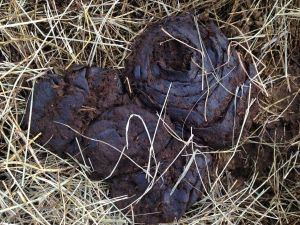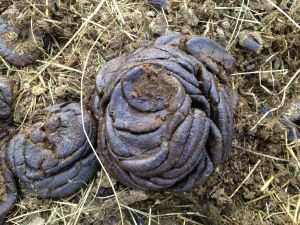Cow-Calf Corner | October 9, 2023
The Herd Rebuilding Challenge
Derrell S. Peel, Oklahoma State University Extension Livestock Marketing Specialist
There can be little doubt that the biggest issue in the cattle industry right now is the question of when herd rebuilding will begin. The challenge of herd rebuilding can be summed up with the following three questions.
What do we need to do?
Drought-forced herd liquidation due to roving drought from 2020-2022 has pushed the beef herd smaller than intended and smaller than it needs to be. The January 1 beef cow herd at 28.9 million head, is the smallest since 1962. The beef cow herd has continued to decrease in 2023 and will be smaller yet going into 2024.
Domestic and international demand for U.S. beef will support and encourage a significantly larger herd going forward. This will require increased heifer retention and reduced cow culling that will further squeeze cattle slaughter and beef production for at least 2-3 years. After record beef production in 2022, due to drought liquidation, beef production is falling in 2023 and expected to fall sharply for at least two more years. By 2025, beef production is forecast to be down 15-16 percent from the 2022 level. This will be the lowest level since 2015 and possibly the lowest level since 1993. Herd rebuilding will be needed and encouraged by the market.
What can we do?
Persistent drought is making it difficult to stop herd liquidation, never mind stabilizing and then rebuilding the herd. As of early October, 40 percent of the U.S. is in some stage of drought with 23 percent in D2 (Severe) to D4 (Exceptional) drought. This includes regions where significant numbers of beef cows are located. While herd liquidation is likely still happening in some regions, from a national perspective, herd liquidation has slowed or stopped. Beef cow slaughter is down year over year in 2023 but is not down enough to suggest that the cow herd has fully stabilized.
Moreover, the continued liquidation of cows and heifers in recent years means that the industry has little ability to begin any herd expansion soon. The latest monthly slaughter data shows that total female (cow+heifer) slaughter has averaged 51.7 percent of total cattle slaughter in the last year, the highest average rate since 1986. It will take several months of reduced female slaughter before any herd expansion will be possible. In the most recent herd expansion, the percentage of female slaughter in total cattle slaughter dropped to a low of 43.3 percent in 2016, two years into the last cyclical expansion. The situation now suggests that, once it starts, it will likely take a year or so before the cow herd inventory will stabilize and any expansion can begin.
What do we want to do?
Finally, is the question of producer expectations and whether producers are even trying to begin rebuilding. While some producers can’t rebuild due to continued drought or drought recovery, other producers have compelling financial needs to pay down debt or restore equity drained by drought and high input costs before retaining any heifers. Certainly, some producers are beginning to retain heifers but, on balance, it looks like minimal herd rebuilding is starting in 2023. Some older producers are looking at the current market as a means to exit cattle production, or at least, cow-calf production. Sharply higher interest rates and the cost of financing herd rebuilding is also a deterrent for some producers and lenders, especially when combined with some skepticism about how long the current market will last.
All in all, it’s beginning to look like 2024 will be, at best, a year of stabilizing the beef cow inventory. Neither Mother Nature nor producers seem to be in much of a hurry to get started with the next herd expansion. When it does start, herd rebuilding is likely to be a lengthy process with strong prices supporting the recovery of the industry.
Manure Scoring
Mark Z. Johnson, Oklahoma State University Extension Beef Cattle Breeding Specialist
At this time of year, producers with spring calving herds are in the process of managing cows for the next calving season in 2024. With warm season grasses going dormant and losing nutritional quality. There are a couple of convenient management tools we can use to ensure we are meeting our cow’s nutritional requirements. The first is body condition scoring cows and the second is to monitor manure consistency. By monitoring body condition score (BCS) across our entire cowherd, on a regular basis, we can monitor the plane of nutrition over the long-term. This will answer the question “What condition are my cows in, and are they gaining, maintaining or losing condition?” The goal is to have cows in a BCS 5 at calving (on a 1-9 scale). If cows are in adequate condition (BCS 5 or higher) and maintaining, no immediate nutritional changes are needed. However, if cows are in poor condition (BCS less than 5) or losing condition, nutritional management changes are needed requiring the addition of protein supplemental and/or energy so that BCS does not drop below 5 before calving. If the cows are in BCS greater than 5 and maintaining, the nutrition program is more than adequate.
What is Manure Scoring?
Manure scores range from 1 – 5. A manure score of 1 is more liquid than solid with consistency of cream soup. A manure score of 5 is very firm and can stack several inches high. These are the manure piles you trip over when walking through pastures. In healthy cows, manure scoring can serve as an indicator of forage quality and animal performance. In the short term, manure scoring helps us make sure we are providing enough nutrition without overdoing it. At this time of year, the primary question this indicator can help answer is, “Do the cows need a protein supplement? If they are receiving a protein supplement, is it enough?” The pictures below show manure from animals that have excess dietary protein (Figure 1), adequate dietary protein (Figure 2), and a deficiency of dietary protein (Figure 3) during late gestation.
Figure 1.
| Image | Caption |
|---|---|
 |
Manure patties similar to Figure 1 indicate a diet with crude protein greater than 10%. The center of the patty has a crater-like appearance. If there are small folds present around the edges of the patty, the crude protein content will be in the 10-13% range. No additional supplementation is needed for mature cows with manure of this consistency during late gestation. |
Figure 2.
| Image | Caption |
|---|---|
 |
Manure patties similar to Figure 2 indicate dietary crude protein between 6 and 9%. This manure will have flat folds. As forage quality increases the folds become smaller. There will typically be a small depression in the center of these patties and they will stand 1 ½ to 2 inches tall. This manure indicates forage quality adequate to meet maintenance requirements for mature cows. Depending on the stage of production, additional protein supplementation may be required particularly during late gestation or early lactation. |
Figure 3.
| Image | Caption |
|---|---|
 |
The manure in Figure 3 indicates diets with crude protein of 5% or less. These patties have very distinct rings at the lower portion which tend to be firm. Manure from this forage quality tends to stack, but the rings are a true indicator of lower forage quality. This manure type indicates the forage is below maintenance requirements for all classes of beef cattle and that protein supplementation is necessary to increase digestibility and utilization of the low-quality forage. |
When cows are grazing dormant range, it can be challenging to get a representative sample of the forage to test for quality. Manure scoring is easily done while checking pastures and indicates protein deficiency, adequacy or excess in the diet. When manure scoring indicates inadequate dietary protein, adding or increasing the level of protein supplementation will be beneficial in meeting overall nutrient requirements and maintaining the BCS of your cowherd.
References
Monitoring Nutrient Status of Beef Cows
Using Manure Evaluation as a Diagnostic Tool for Feeding Programs
OSU Beef Cattle Manual, Eighth Edition, E-913
Body Condition and Reproductive Failure
Dave Lalman, Oklahoma State University Extension Beef Cattle Specialist
Over the years, quite a lot of research established the link between body composition and overall pregnancy rate in beef cows exposed to a limited breeding season. Most of the older work indicates improved overall pregnancy rate when cows calve in a body condition score 5 or greater (scale of 1 to 9) and when first-calf heifers calve in a body condition score 6 or greater (scale of 1 to 9). Recently, I ran across an excellent data set evaluating pregnancy rates associated with body condition score recorded at the time of weaning. This data was originally published in the Montana Farmer-Stockman by Dr. Matt Cherni, DVM. In his data set, 78,398 weaning body condition score and pregnancy records were collected over a seven-year period on one large cow/calf operation.
Body Condition Score at Weaning
Table 1.
| ≤ 3 | 4 | 5 | 6 | > 6 | |
|---|---|---|---|---|---|
| No. of Cows | 2,418 | 16,822 | 30,567 | 20,826 | 7,765 |
| % Pregnant | 73.9 | 83.4 | 93.4 | 95.5 | 95.6 |
| Probability of Remaining in Herd at Age 11a, % | 4 | 15 | 49 | 65 | - |
aDr. Clifton Willms, CattleWise Consulting. Probability considers body condition score, age, and pregnancy at weaning with all open cows culled each year.
There is generally a moderate correlation between body condition at calving and body condition at the time of weaning. Thus, it is not surprising that increased body condition at weaning was also associated with increased pregnancy rate (Table 1). Dr. Cherni’s data also revealed substantial reduction in pregnancy when 2 and 3-year-olds and when 9 and 10-year-olds were in body condition score 3 or less at the time of weaning. Interestingly, a score of 4 was more detrimental to pregnancy rates in the 9 and 10-year-old cows. A score of 4 had little impact on 2-year-olds’ pregnancy and only slight negative impact on 3-year-olds when compared to cows of the same age and a score of 5 or greater at weaning.
Dr. Clifton Willms used this data set to calculate the probability of remaining in the herd at age 11 assuming all cows that were open at weaning were culled each year (Table 1). In his analysis Dr. Willms estimated dramatic improved longevity in cows that were able to maintain a body condition score of 5 or greater.
These data confirm the important connection between reproductive efficiency and body composition of the cow. Certainly, the production system should be designed to achieve moderate herd-average body condition at calving and weaning in most years. More importantly, these data highlight the opportunity to select animals within contemporary groups that are a great fit for the environment from a body composition standpoint. Said another way, cows with body condition score below herd average at calving or weaning may require expensive purchased or harvested supplemental feed to avoid reproductive failure. Assuming they are otherwise healthy, those animals within each contemporary group are telling us that they are not a good fit for the ranch environment. Without expensive artificial environmental adjustments they have a much greater probability of reproductive failure.
